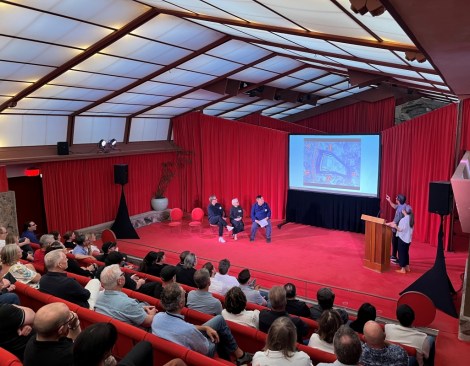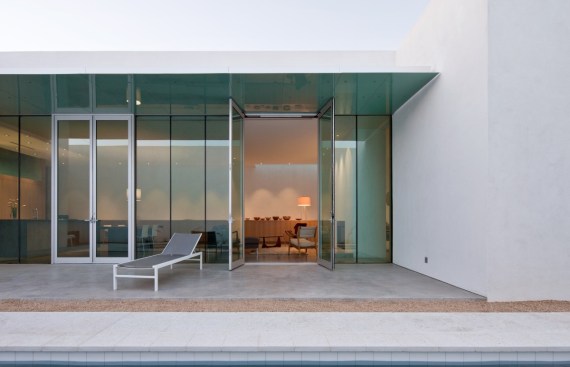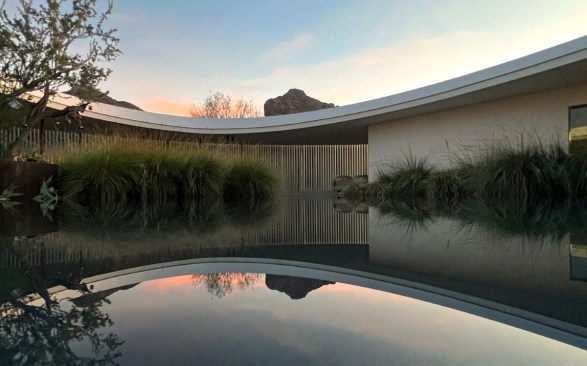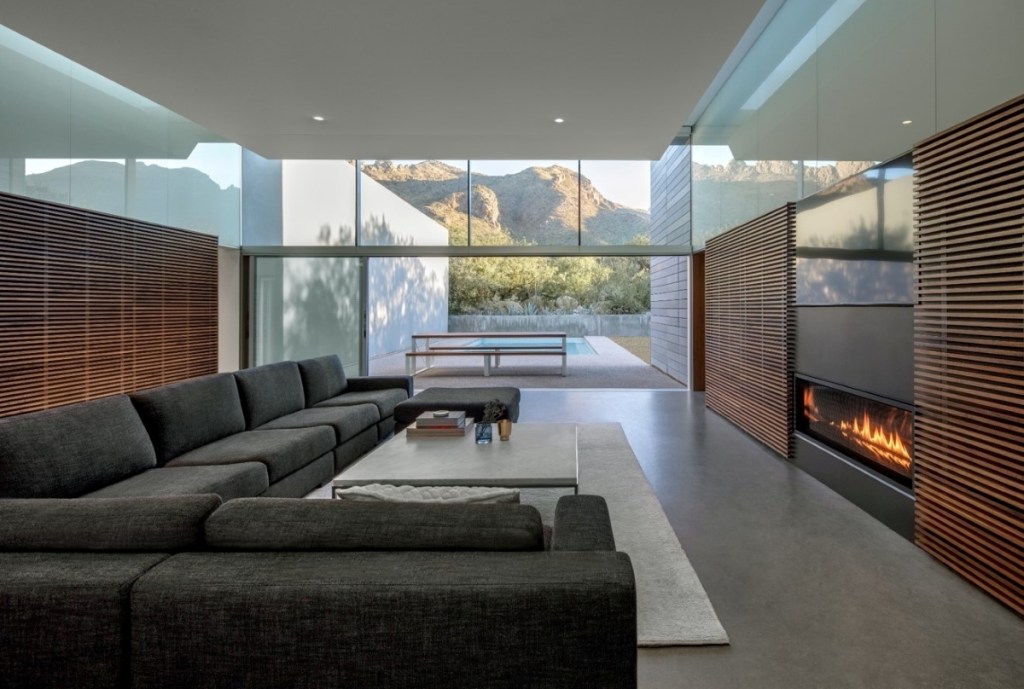Clean lines, open plans, and passive cooling strategies defined midcentury modernism in the Desert Southwest. Today, a new generation of residential architects is both preserving those iconic structures and evolving the region’s design language to meet the desert’s distinct challenges and opportunities.
At a recent ARCHITECT U continuing education event sponsored by Marvin called Reimagining Desert Modernism: The Architecture Shaping Arizona Today, nearly 100 architects and designers gathered at one of the state’s modernist landmarks—Frank Lloyd Wright’s Taliesin West in Scottsdale—to explore the roots of desert modernism, share adaptive reuse strategies, and present case studies that leverage contemporary materials and performance-driven technologies. Moderated by ARCHITECT Editor-in-Chief Paul Makovsky, the panel-style course featured the husband-and-wife architectural teams of Thamarit “Tommy” Suchart and Patricia Chen of Scottsdale-based Chen Suchart Studio and Michael Kothke and Kathy Hancox of 2024 RADA-winning Tucson-based HK Associates.

Photo by Mary Beth Blom.
The continuing education event at Taliesin West in Scottsdale, Ariz.
“We see ourselves on a continuum of human inhabitation within this amazing and extreme, yet abundant, environment,” said Kothke, who, along with Hancox, opened the discussion. Their firm’s work builds on Arizona’s architectural lineage—from early Sonoran Desert traditions to modernist innovators like Arthur Brown and Tom Gist. “We want to reflect on the lessons and restraint and responsiveness of these Tucson architects,” he said.
Most of HK Associates’ projects feature courtyards, framed views, and reflective surfaces to connect indoor and outdoor spaces. “We structure our projects as a dialogue between these exterior rooms and open interior conditions,” Hancox said. The firm often uses mirrored and back-painted glass to reflect views and bring in desert light, as seen in the clerestory window of Canyon House.
Their renovation work, including the midcentury lightHOUSE, showcases a phased, low-embodied-carbon approach to design. Here, the team stripped away partitions and finishes to reveal the original post-and-beam structure. “We felt like we were putting the house back to where it wished it would’ve been,” Hancox said.
The duo also shared examples of passive strategies. Barrio Historico House, located in Tucson’s Barrio Viejo, follows preservation guidelines while integrating modern performance elements, including an insulated courtyard, concrete walls, and a rooftop periscope that channels mountain views into the home.

Photo by Bill Timmerman.
Barrio Historico House in Tucson, Ariz., by HK Associates.
“We really try hard to listen to what people are saying, and then read between the lines,” Kothke said. One client wanted to repaint the structure until Hancox’s silent reaction changed the course. “They stopped stone cold,” Kothke recalled. “And they’re like, ‘Well, I guess we’re sandblasting it then.’”
Chen and Suchart brought a complementary perspective, including discussion of a Passive House Institute US (PHIUS) Passive House Plus-certified home in Paradise Valley, Ariz. Driven by their client’s interest in performance standards, the design embraces the formal restraint necessary for airtightness, continuous insulation, and mechanical ventilation.
Despite the complexity of PHIUS standards, the house includes a 50-foot-long window wall facing Camelback Mountain. “The project shows you can have a highly modern piece of architecture while still meeting PHIUS requirements,” Suchart said.

Tommy Suchart and Patricia Chen’s own home in Paradise Valley, Ariz., by Chen Suchart Studio.
Suchart also discussed their own recently completed home, where four rectangular volumes are arranged around a courtyard with a swimming pool and unified by a circular roof and ground plane. “We don’t necessarily swim every day, but just peering out at the pool brings in light, water, and sky,” Cheng said.
When asked how they educate clients about performance strategies and sustainability, both firms emphasized the value of conversation. “Education is a constant thing for us,” Suchart said. “Some clients educate us, too.”

Tommy Suchart and Patricia Chen’s own home in Paradise Valley, Ariz., by Chen Suchart Studio.
Audience questions pushed the discussion toward broader architectural responsibility. One architect asked whether custom homes still make sense in an era of climate and housing crises. Kothke pointed to the modesty of historic case study homes—many under 2,000 square feet—as a model for restraint.
The evening underscored that reimagining desert modernism isn’t about nostalgia but about building on timeless principles—regional response, environmental performance, and thoughtful use of space—and applying them to today’s realities. “We engage the continuum,” Hancox said, “in pursuit of architecture that will endure, adapt, and sustain a conversation with the desert.”
